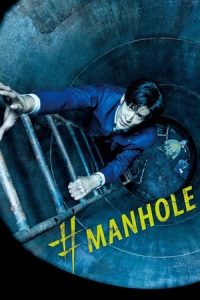- Source: Nagoya Broadcasting Network
JOLX-DTV (channel 6), branded as Mētele (メ~テレ, Mētere) is the Chūbu region flagship station of the All-Nippon News Network, owned by the Nagoya Broadcasting Network Co., Ltd. (名古屋テレビ放送株式会社, Nagoya Terebi Hōsō Kabushiki gaisha), with its headquarters in Nagoya. It is broadcast in Aichi Prefecture, Gifu Prefecture, and Mie Prefecture.
The station is well known among anime fans for its close association with the anime studio Sunrise (now known as Bandai Namco Filmworks), including participating in the production of such works as Mobile Suit Gundam, Zambot 3 (and its successor Daitarn 3), and Yoroiden Samurai Troopers.
Capital composition
Information as of March 31, 2021:: 371
Headquarters and offices
Headquarters: 2-10-1 Tachibana, Naka-ku, Nagoya, Aichi Prefecture
Toyohashi office: 8th floor, Shizuka Bank Nissay Toyohashi Building, 1-68 Ohashi Dori, Toyohashi City, Aichi Prefecture
Gifu office: Nohi Nissei Building, 2-8 Hashimotocho, Gifu City, Gifu Prefecture
Mie office: 10th floor, Asto Tsu, 700 Hasokocho, Tsu City, Mie Prefecture
Tokyo office: Inside the Cross Ginza Building, 5-9-8 Ginza, Chuo-ku, Tokyo
Osaka office: 16th floor, Nakanoshima Festival Tower, 2-3-18 Nakanoshima, Kita-ku, Osaka, Osaka Prefecture
History
= License
=On November 24, 1959, Shotaro Kamiya, the then-president of Toyota Motors Sales Division, alongside ten other people, set up a license for Chūkyō Television Broadcasting, for the license of the third television station in the Tokai area.: 37 At that time there were an initial total of 9 companies which was later reduced to 5 companies (after 4 of the companies agreed to merge with Chukyo TV).: 37 On July 14, 1961, the Ministry of Posts (current Ministry of Internal Affairs and Communications) awarded the license to Chukyo TV being designated on channel 11. Afterwards, Chukyo TV held a founding meeting on August 30 of the same year, issued 400,000 shares, with a capital of 200 million yen.: 37 On November 25, 1961, Chukyo Television changed the company name to "Nagoya Broadcasting Co., Ltd.", referred to as "Nagoya Television",: 38 on the grounds that the place name "Nagoya" was more friendly.
= Nippon TV and NET years
=On November 25, 1961, the company was renamed to Nagoya Broadcasting Network.: 38 Prior to its official broadcast, there were only two commercial broadcasters in the Tokai region: CBC (which is part of JNN) and Tokai TV (which is part of FNN and NNN).: 39 Nagoya TV then decided to become part of the Nippon TV and NET TV (current TV Asahi),: 39 which resulted from Tokai TV to become a full-time FNN affiliate.: 39
The first tests of NBN were held on March 10, 1962. Eventually, service tests were conducted on March 25 and regular transmissions commenced on April 1, at 6:50am.: 44 At the beginning of its operations, 65.8% of the programs broadcast by Nagoya TV were produced by Nippon Television, 25.7% were produced by NET Television, 5.1% were produced by themselves, and 3.4% were produced by other television stations.: 45 In June 1963, the Nagoya Television Labor Union was established.: 63 The labor relations at Nagoya TV were not harmonious in the early days. In July 1966, there was an incident where union members surrounded Nagoya TV for 23 days.: 63 However, the excessive confrontational behavior of the Nagoya TV union also caused dissatisfaction among some employees. These employees established a separate "Wakatake Association" in July 1969, and the Nagoya TV union split.: 73 In 1974, with the efforts of the labor union and Wakatake Kai, Nagoya TV became the seventh private TV station in Japan to have two days off per week.: 87
In July 1966, Nagoya TV abolished the afternoon off-air period and realized uninterrupted broadcasting throughout the day.: 52 On December 15 of the same year, Nagoya TV broadcast its first color program.: 52 In 1969, Nagoya TV implemented all news programs in color.: 73 On September 26 of the same year, Nagoya TV launched its logo, a blue 11 in the hole of a red and green oval.: 70 In June 1972, Nagoya TV was allowed to conduct independent interviews in China. This was the first time since the beginning of the Cultural Revolution that a foreign TV station was qualified to conduct independent interviews in China.: 77 Nagoya TV's long-term coverage of China was recognized by the Japan Private Broadcasting Federation Award in 1975.: 89 In 1976, Nagoya TV's 6th China coverage was edited into a 13-episode documentary and broadcast nationwide through the ANN network.: 91
= As a sole ANN affiliate
=Since its inception, Nagoya TV has maintained a ratio of about 60% of its broadcast programs coming from Nippon TV and about 30% from NET TV. However, this caused strong dissatisfaction with NET TV, which demanded that the ratio be changed to 5:5, one half from NTV and the other from NET. In October 1972, it intervened in the program adjustment of Nagoya TV and changed the program from 20:00 to 22:00 on Saturday night to NET TV. This move aroused strong dissatisfaction with Nippon Television, and the two went to court, and finally settled with a compromise plan of adapting one hour of the two-hour NET TV program to be broadcast.: 80 This incident became an opportunity for Nagoya TV to withdraw from the Nippon Television Network.: 80 On December 27, 1972, Nagoya TV, Chukyo TV, Nippon Television, and NET TV held a four-party meeting. After the meeting, the four parties agreed that Chukyo TV would fully become a member of the Nippon TV network, and Nagoya TV would fully become a member of the NET TV series network.: 84 When the network was switched, Nagoya TV broadcast a large number of advertisements to increase awareness of the network switch and curb the economic losses caused by this matter.: 85
In 1976, Shotaro Kamiya resigned as the president of Nagoya TV, which was the first time the president was replaced after Nagoya TV started broadcasting.: 90 In 1979, the success of "Mobile Suit Gundam" and the special program starring then Japanese Prime Minister Masayoshi Ōhira greatly increased the national popularity of Nagoya TV.: 99 In the 2nd, 3rd and 5th weeks of April 1981, Nagoya TV won the triple crown of ratings for the first time.: 105 In 1981 and 1982, Nagoya TV ranked first in the daily ratings for two consecutive years.: 108
In 1987, on the occasion of its 25th anniversary, Nagoya Television changed the official name of the company from "Nagoya Broadcasting" to the current "Nagoya Television Broadcasting", unified the official name and general name, and launched a new logo, while changing its English name to Nagoya TV.: 129 In the same year, Nagoya TV also launched a new morning information program "Good Morning Nagoya TV".: 129 In July 1995, Nagoya TV opened its official website, becoming the second private TV station in Japan to open an official website (after TBS).: 161 In 1996 and 1997, the 35th anniversary of its launch, Nagoya TV produced a series of special programs such as "Late Night Express '96 ~ Hot Wind Asia ~",: 163 and won three Japan Private Broadcasting Association Awards.: 167 At the turn of the century, Nagoya TV signed cooperation agreements with foreign TV stations such as Dalian TV, Ho Chi Minh City Television, Suzhou Radio and Television and Arirang TV to strengthen overseas cooperation.: 171
The current brand, Mētele (メーテレ Mētere, derived from the first character in the name Nagoya (名, on reading "めい" mei)), and hybrid sheep-wolf mascot (Wolfy) were introduced on April 1, 2003. The design concept of Wolfy is "a wolf in sheep's clothing", which means that although it is a sheep now, it is shedding its skin and becoming a wolf TV. The name "Wolfy" was selected from more than 15,000 submissions: 192 During the 2005 Aichi International Expo, Nagoya TV not only broadcast a series of special programs, but also co-organized a concert with the Expo Association on May 28.: 201 In 2007, on the occasion of its 45th anniversary, Nagoya TV's average daily ratings reached 8.9%, ranking second among Nagoya private TV stations for the first time in 15 years. In the same year, Nagoya TV also ranked second with an average prime-time viewership rating of 13.1%.: 209
In 2009 and 2010, affected by Japan's economic depression after the global financial crisis, Nagoya TV suffered losses for two consecutive years.: 221 In 2011, Nagoya TV turned losses into profits.: 224 On July 24 of the same year, Nagoya TV stopped broadcasting analog TV signals and fully entered the digital TV era.: 225 In 2012, on the occasion of the 50th anniversary of its launch, Nagoya TV launched the promotional slogan "Sheep and Wolf are both Mētele" (Sheepも. Wolf も. メ~テレ) and produced many special programs.: 228–229 This year, Nagoya TV's prime-time ratings reached 13.4% and evening-time ratings reached 13.5%, winning the double crown in ratings. In 2013, Nagoya TV won the double crown in ratings.
Nagoya TV is also very keen on contributing to local causes. The year after the broadcast, Nagoya TV donated 1,000 street trees to the Nagoya City Hall.: 47 Since then, Nagoya TV has continued tree planting activities for a long time. By 1984, Nagoya TV had planted more than 30,000 trees in Nagoya City, and also held tree planting activities in Ise City, Yokkaichi City, Toyohashi City and other places.: 117 On October 9, 1969, Nagoya TV donated the large fountain located on the south side of the Nagoya TV Tower to the Nagoya City Hall and named it the "Fountain of Hope." The fountain cost 70 million yen to build and has a diameter of 20 meters.: 71 In 1972, as part of the commemoration of the 10th anniversary of the broadcast, Nagoya TV donated and planted more than 1,100 cherry blossoms in Heihe Park, and named the area where cherry blossoms were planted "Sakura Garden".: 79
On July 21, 2020, NBN became the first commercial television station in Japan to operate a satellite rebroadcast vehicle with 4K capabilities.
On October 2, 2023, the station entered the Locipo web platform, which was initiated by other stations in Nagoya in 2020. Out of the five stations broadcasting from Nagoya, NBN refused to participate at launch.
Stations
= Analog
=JOLX-TV
Nagoya TV Tower - Channel 11
Toyohashi - Channel 60
Takayama - Channel 12
Gujo-Hachiman - Channel 6
Nabari - Channel 56
Toba - Channel 4
Ise - Channel 61
Owase - Channel 10
Kumano - Channel 11, etc.
= Digital
=JOLX-DTV (LX, former NBN)
Remote Controller ID 6
Nagoya (Seto Digital Tower) - Channel 22
Toyohashi, Chuno, Nakatsugawa, Takayama and Ise - Channel 14
Nabari - Channel 37
Studios
When Nagoya TV started broadcasting, it was located in the Clock Building (Clock Tower) at 5-11 Minami Otsudori, Naka- ku, Nagoya City.: 37 However, since the main control room of Nagoya TV is located in the Nagoya TV Tower, the headquarters and main control room are separated in two places, which brings great inconvenience to the business. In addition, the studio space is small, so Nagoya TV decided to invest 1 billion yen in 1964. Build your own headquarters building.: 51 On May 8, 1964, the Nagoya TV headquarters building started construction and was completed in September of the following year.: 55 The first generation headquarters of Nagoya TV had 4 floors above ground and 1 floor underground, with a total floor area of approximately 2,300 square meters.: 55 There are two studios in the headquarters building. The large studio has an area of 500 square meters and the small studio has an area of 165 square meters.: 55 On October 3, 1965, Nagoya Television officially began broadcasting television signals from the headquarters building.: 55 In 2011, the old headquarters of Nagoya TV was demolished.: 226
In 1998, in order to adapt to the needs of the digital television era, Nagoya TV began planning to build a new headquarters.: 171 On September 26, 2001, a groundbreaking ceremony was held for the new headquarters of Nagoya TV.: 182 After a year and a half of construction, the new Nagoya TV headquarters was completed on April 25, 2003.: 191 The new headquarters of Nagoya TV has 8 floors above ground and 1 floor underground, with a total floor area of 20,811 square meters.: 191 There are a total of 6 studios in the building, of which the largest studio B has an area of 410 square meters, and studio A also has an area of 320 square meters.: 191 The news studio is located on the 4th floor and can be combined with the news department in case of emergency news.: 191 On July 1 of the same year, Nagoya TV began broadcasting signals from its new headquarters.: 191
Real estate business
In addition to its television business, Nagoya TV is also actively involved in real estate. In 1978, Nagoya Television built the NBN Izumi Building in Sakae. The building has 8 floors above ground and 2 floors underground, with a total floor area of 7,258 square meters. The project cost 1.15 billion yen. It is occupied by Nagoya TV and affiliated companies, Toyota Sales and other companies.: 97 On November 2 of the same year, the Central Park Underground Mall operated by a company affiliated with Nagoya TV opened for business. On the opening day, about 20,000 people visited.: 97 On November 1, 1986, Central Park Annex (セントラルパーク・アネックス), a clothing department store invested by Nagoya Television, opened.: 125
Programs
= Overview
=In the early days of broadcasting, Nagoya TV produced mainly news and sports broadcasts. Rikidozan's last game of his career in 1963 was produced and broadcast by Nagoya TV.: 48 Nagoya TV was also the first TV station in the Tokai region to broadcast the assassination of John F. Kennedy.: 39 In 1968, Nagoya TV broadcast exclusive news about the attack on Nagoya Station, the first vice president of the Soviet Union.: 66 In the same year, Nagoya TV also broadcast a special program on the Hida River bus crash accident, establishing a reporting system for major incidents.: 68 In 1986, Nagoya TV launched a large-scale news program "Nagoya TV News Just 6" (Nagoya TV News Just 6) in the evening to strengthen the news program.: 126 In 1994, Nagoya TV began broadcasting a special program at 21:48 that night after the China Airlines Flight 140 crash.: 155 In 1998, Nagoya TV produced and broadcast its first large-scale evening information program "Information Live To You!".: 171 In 2005, Nagoya TV renamed its evening information program "UP!", which is a longevity program that continues to be broadcast to this day.: 202 In addition to "UP!", another large-scale strip information program on Nagoya TV is "How is it!" (ドデスカ! ), which is broadcast from 6 a.m. to 8 a.m. from Monday to Friday. It is also the only one in Tokai. The morning local information program set a record for the highest ratings since its launch in 2018.
In 1986, Nagoya TV sent a correspondent to ANN's Washington bureau, becoming Nagoya TV's first overseas correspondent.: 125 In 1991, Nagoya TV’s coverage of the August 19 coup won the ANN Monthly Award: 141 in August of that year. In 1992, Nagoya TV opened its first overseas branch, ANN Singapore Branch. After the branch was closed in 2004, Nagoya TV still sent a reporter to the ANN Bangkok branch.: 145
In 1966, Nagoya TV began to broadcast the first live broadcast program produced by the company, "Madam, 30 Minutes with You". This program was also Japan's first housewife-oriented information program produced by a local station.: 61 In the same year, Nagoya TV also produced the first TV series "100 Scenes of Couples".: 62 After switching to a network in 1973, Nagoya TV had to strengthen its program production capabilities because NET TV's program production capabilities were weaker than those of the core bureau at that time. After switching to the network, Nagoya TV produced a daily children's program "Bunbunbanban" that was broadcast nationwide.: 85 In 1977, Nagoya TV's 15th anniversary TV series "Holding Hands" (お手々つないで) was broadcast in prime time nationwide through the ANN network. It was the first TV series broadcast by Nagoya TV in prime time.: 93 In 1978, Nagoya TV also produced the first live daily information program "Look Here!" (こっちむいてホイ!).: 96 To commemorate the 35th anniversary of tis founding, Nagoya TV began broadcasting the "Late Night Express" series starring Osawa Takao and Matsushima Nanako in 1996.: 171
As early as 1969, the animated program "Six Laws of Crime" (六法やぶれクン) produced by Nagoya TV was broadcast nationwide in Japan.: 71 Invincible Super Man Zambot 3 broadcast from 1977 to 1978 created Nagoya TV's dominant position in the field of robot-themed animation.: 95 In 1979, Mobile Suit Gundam co-produced by Nagoya TV, Sotsutsu, and Sunrise Animation achieved unprecedented success and became a milestone work in the history of Japanese animation.: 99 In July 2009, Nagoya TV held the 30th anniversary festival of Gundam, attracting more than 70,000 people to participate.: 217
= Now on air
=Regional (in Aichi Prefecture, Gifu Prefecture, and Mie Prefecture)
Dodesuka! (どですか!) - local news program
Summers Guerrillappa (さまぁ~ずげりらっパ) - a variety show by Summers
National
Udo-chan no Tabishite Gomen (ウドちゃんの旅してゴメン) - a tourism guide program by Udo Suzuki
Fūfu Kōkan Variety Love Change (夫婦交換バラエティー ラブちぇん) - a late-night documentary show
Battle Spirits (バトルスピリッツ) series
= Past
=Regional
Mētele Wide Super J Channel (メ~テレワイドスーパーJチャンネル)
National
Invincible Super Man Zambot 3 (無敵超人ザンボット3)
Invincible Steel Man Daitarn 3 (無敵鋼人ダイターン3)
Mobile Suit Gundam (機動戦士ガンダム)
Invincible Robo Trider G7 (無敵ロボトライダーG7)
Saikyō Robo Daiōja (最強ロボ ダイオージャ)
Combat Mecha Xabungle (戦闘メカ ザブングル)
Aura Battler Dunbine (聖戦士ダンバイン)
Heavy Metal L-Gaim (重戦機エルガイム)
Chōriki Robo Galatt (超力ロボ ガラット)
Mobile Suit Zeta Gundam (機動戦士Ζガンダム)
Mobile Suit Gundam ZZ (機動戦士ガンダムΖΖ)
Metal Armor Dragonar (機甲戦記ドラグナー)
Ulysses 31 (宇宙伝説ユリシーズ31)
Ronin Warriors (鎧伝サムライトルーパー)
Jushin Liger (獣神ライガー)
Brave series (勇者シリーズ)
Bomberman B-Daman Bakugaiden (Bビーダマン爆外伝)
Bomberman B-Daman Bakugaiden V (Bビーダマン爆外伝V)
Mighty Cat Masked Niyander (ニャニがニャンだー ニャンダーかめん)
Gekito! Crush Gear Turbo (激闘!クラッシュギアTURBO)
Crush Gear Nitro (クラッシュギアNitro)
Kaiketsu Zorori (かいけつゾロリ)
Majime ni Fumajime Kaiketsu Zorori (まじめにふまじめ かいけつゾロリ)
Black Lagoon (BLACK LAGOON)
Kodai Ōja Kyōryū King: D Kidz Adventure (古代王者恐竜キング Dキッズ・アドベンチャー) - anime television series
Other TV stations in Nagoya
Tōkai Television Broadcasting (THK, 東海テレビ放送, affiliated with CX and FNN / FNS) - 1
Chūkyō Television Broadcasting (CTV, 中京テレビ放送, affiliated with NTV and NNN / NNS) - 4
Chubu-Nippon Broadcasting Co., Ltd (CBC, 中部日本放送, affiliated with TBS TV and JNN) - 5
Television Broadcasting of Aichi (TVA, テレビ愛知, affiliated with TV Tokyo and TX Network) - 10
Notes
References
External links
http://nagoyatv.com - Official website of Natele
Kata Kunci Pencarian:
- Sci-Fi Harry
- Stasiun Higashi Betsuin
- Chūkyō Television Broadcasting
- Masana Oya
- Media massa di Jepang
- Aichi Television Broadcasting
- SKE48
- TX Network
- Zeta Gundam
- Gundam ZZ
- Nagoya Broadcasting Network
- Chūkyō Television Broadcasting
- Amuro Ray
- List of Mobile Suit Gundam episodes
- Mobile Suit Gundam ZZ
- TV Aichi
- NBN
- List of Mobile Suit Zeta Gundam episodes
- Tōkai Television Broadcasting
- Mighty Cat Masked Niyander
The Collective (2023)
#Manhole (2023)
No More Posts Available.
No more pages to load.









